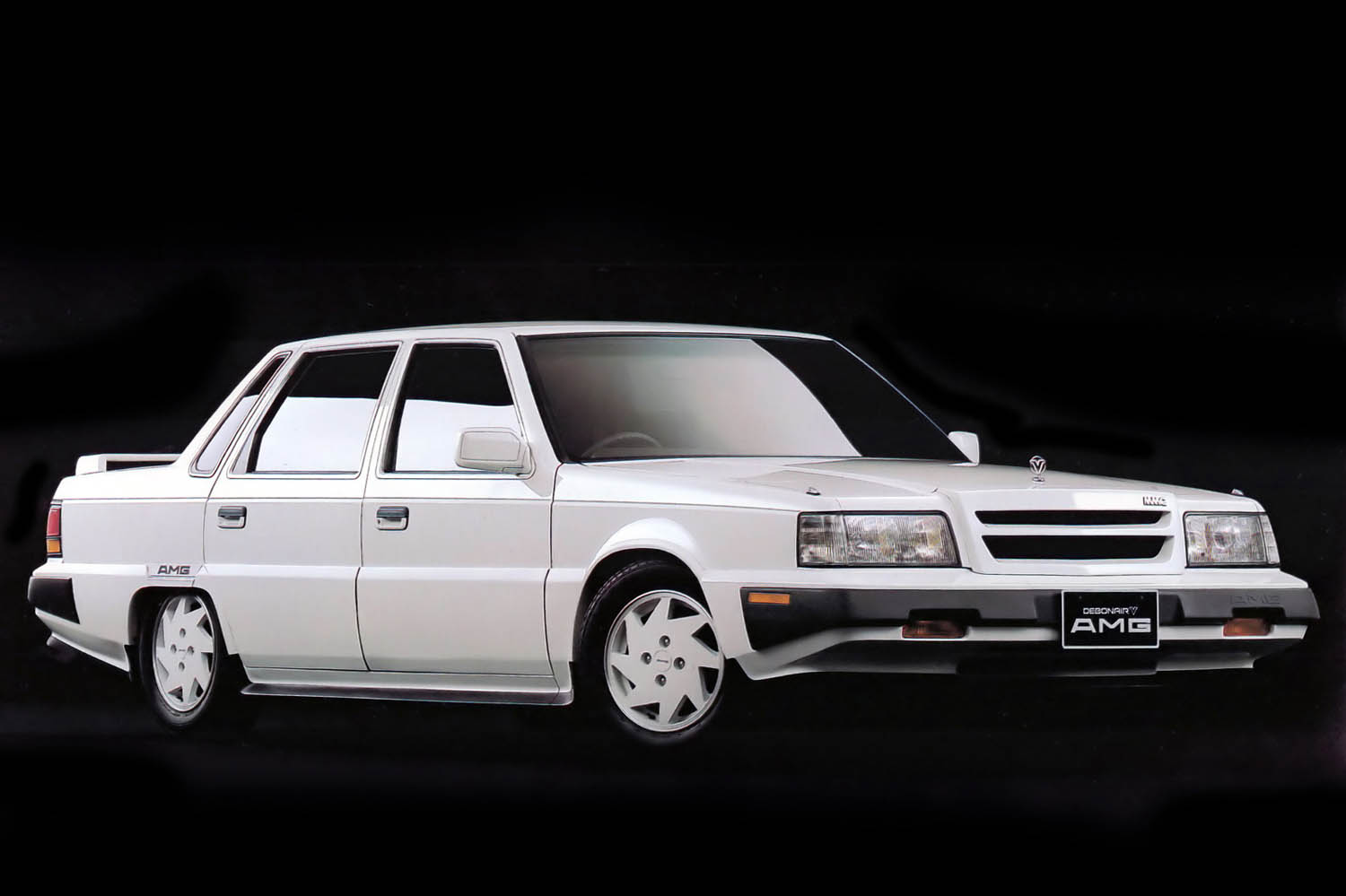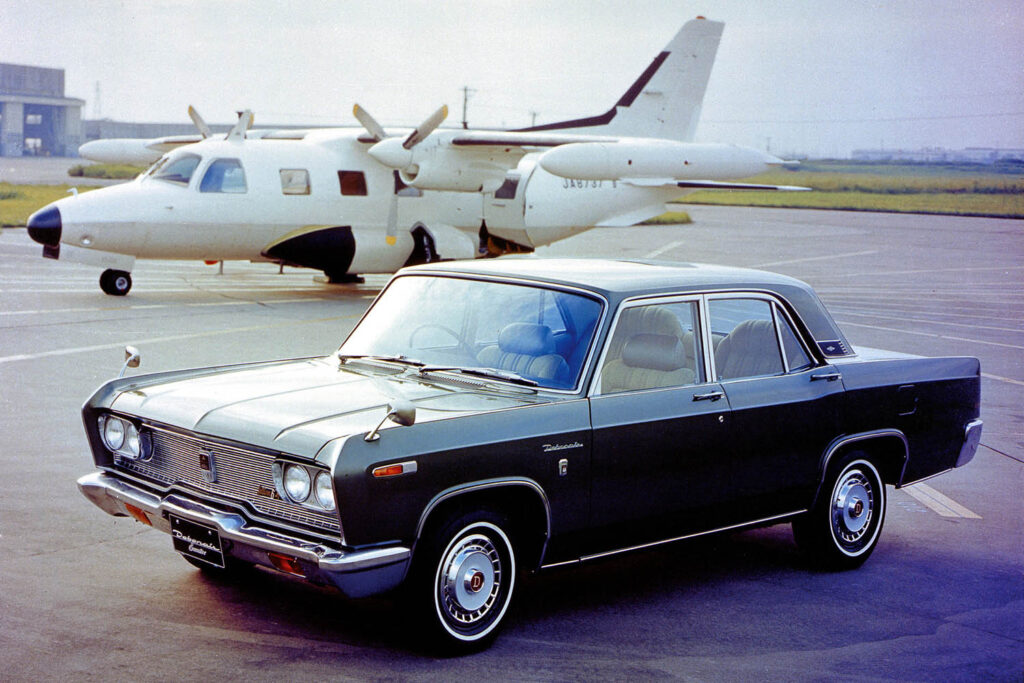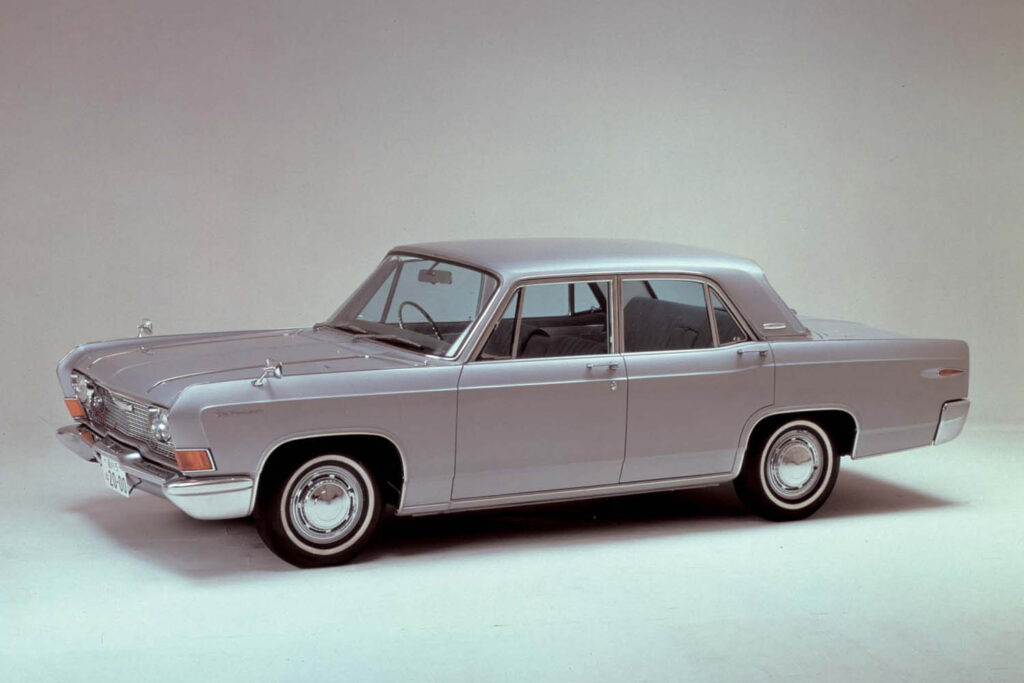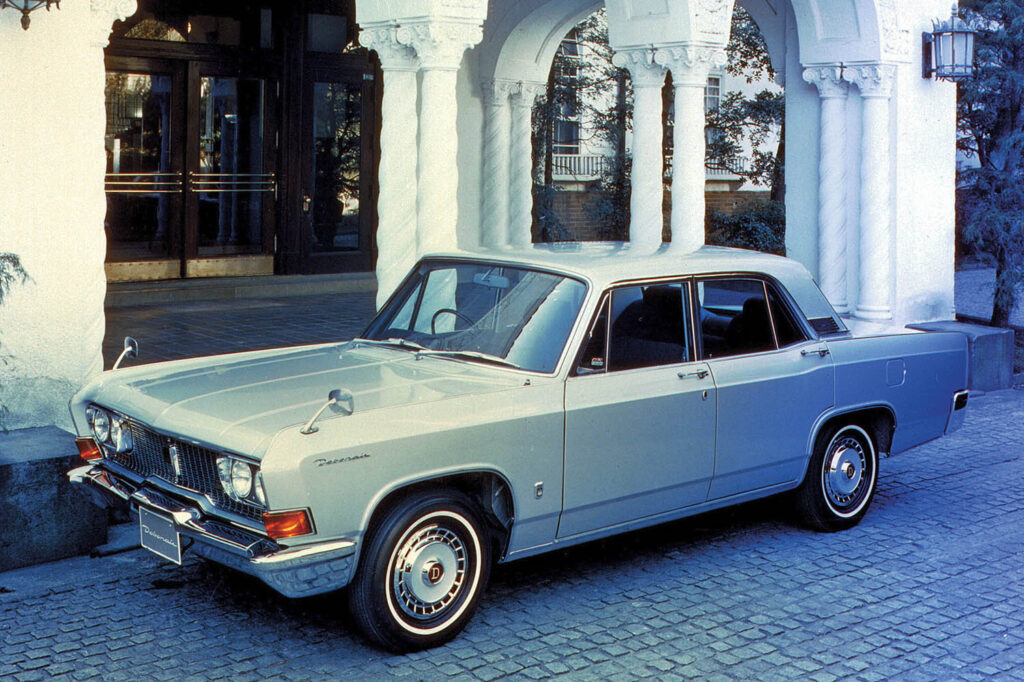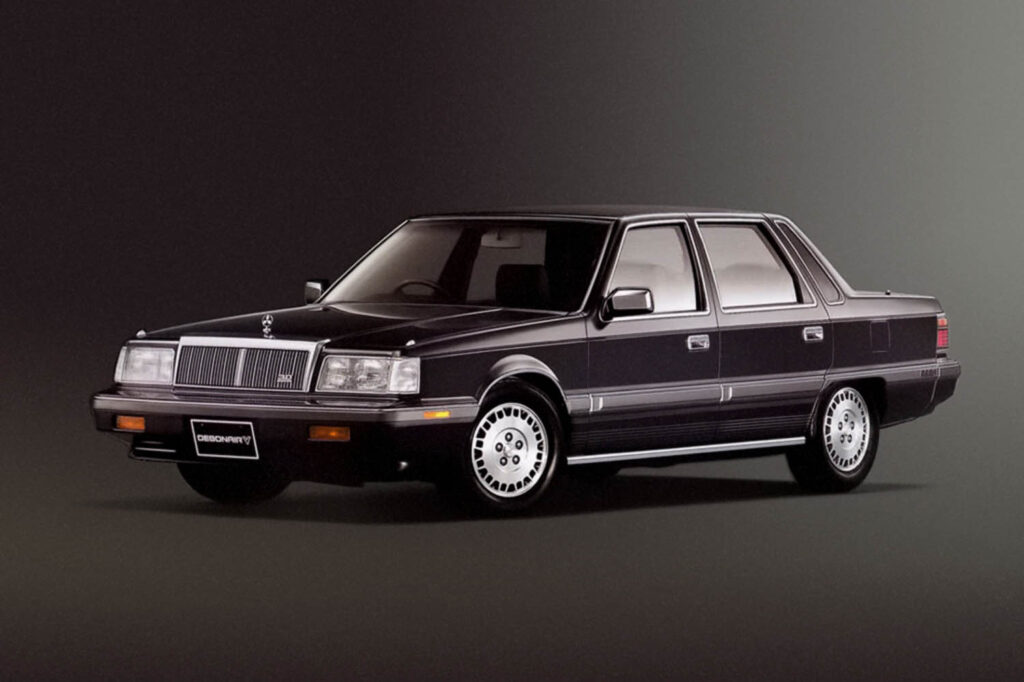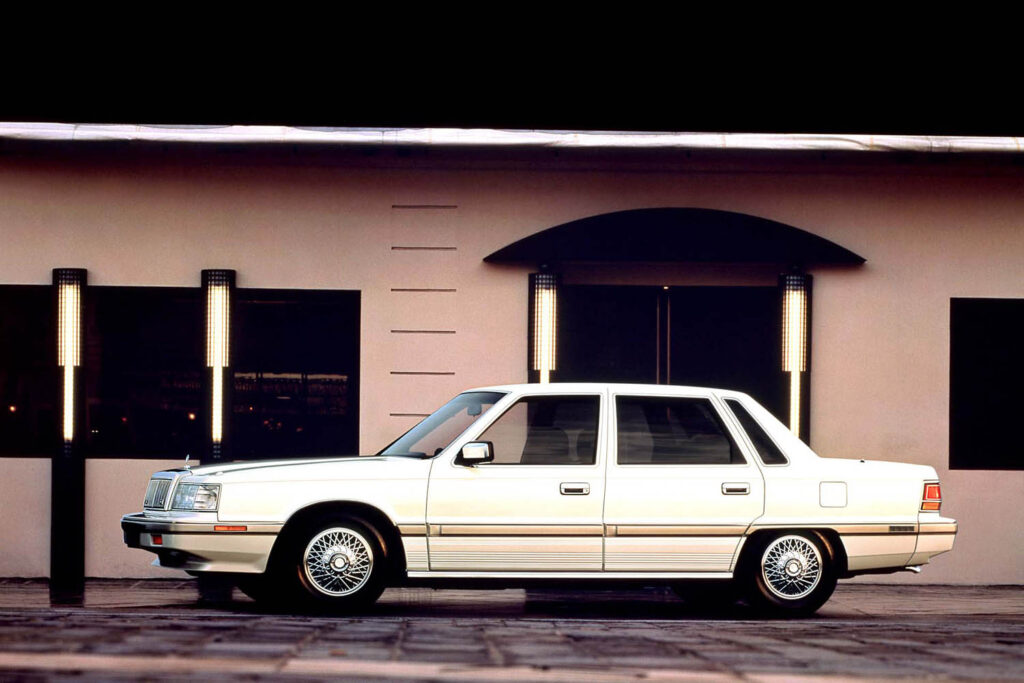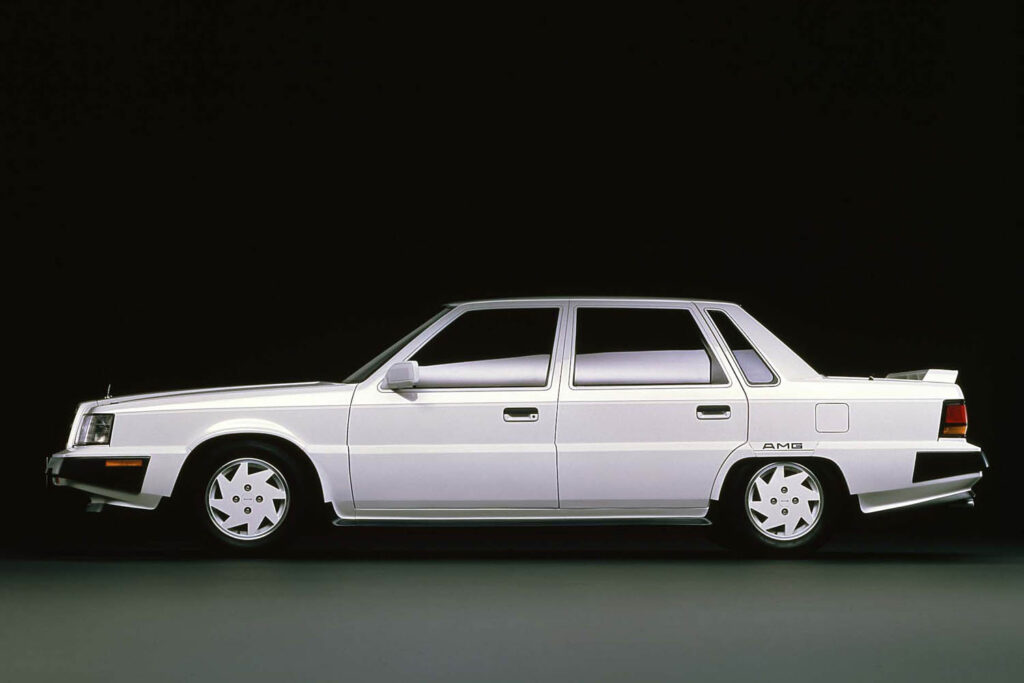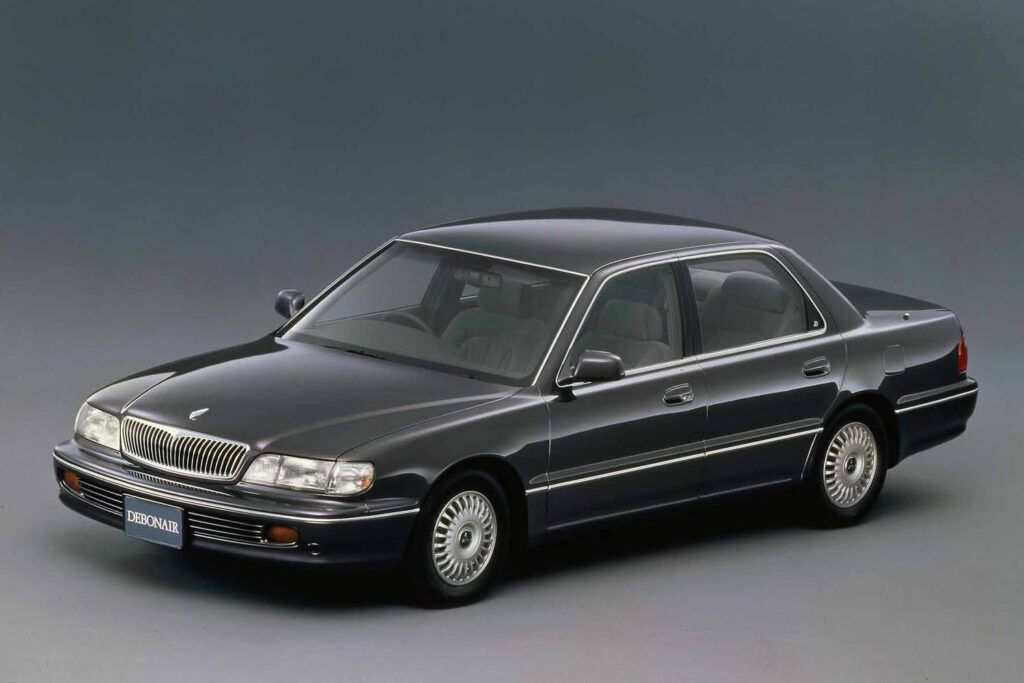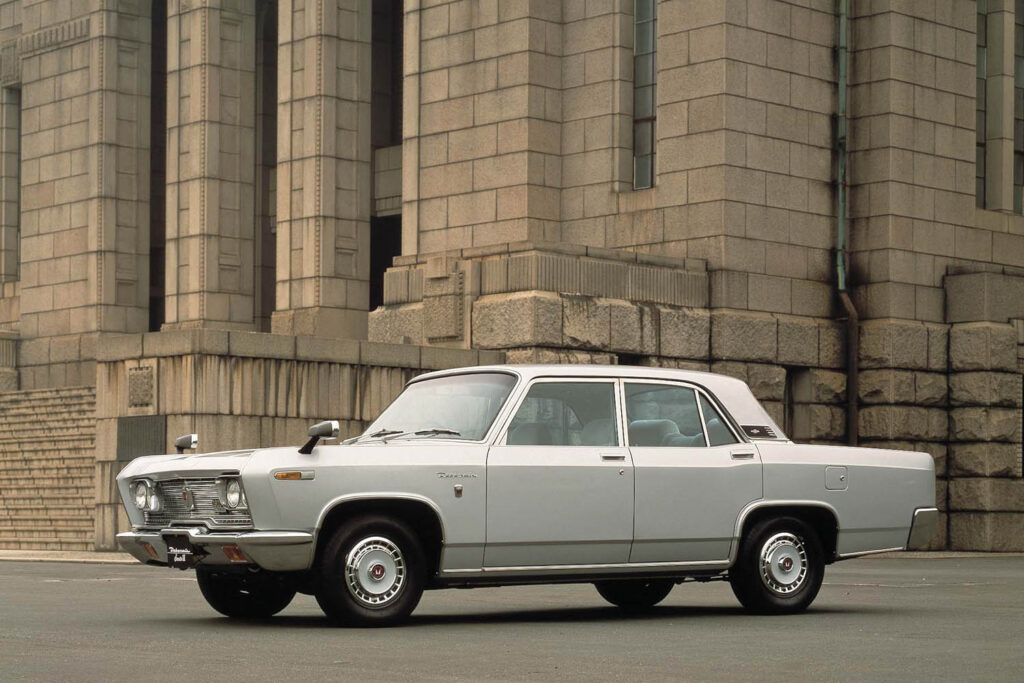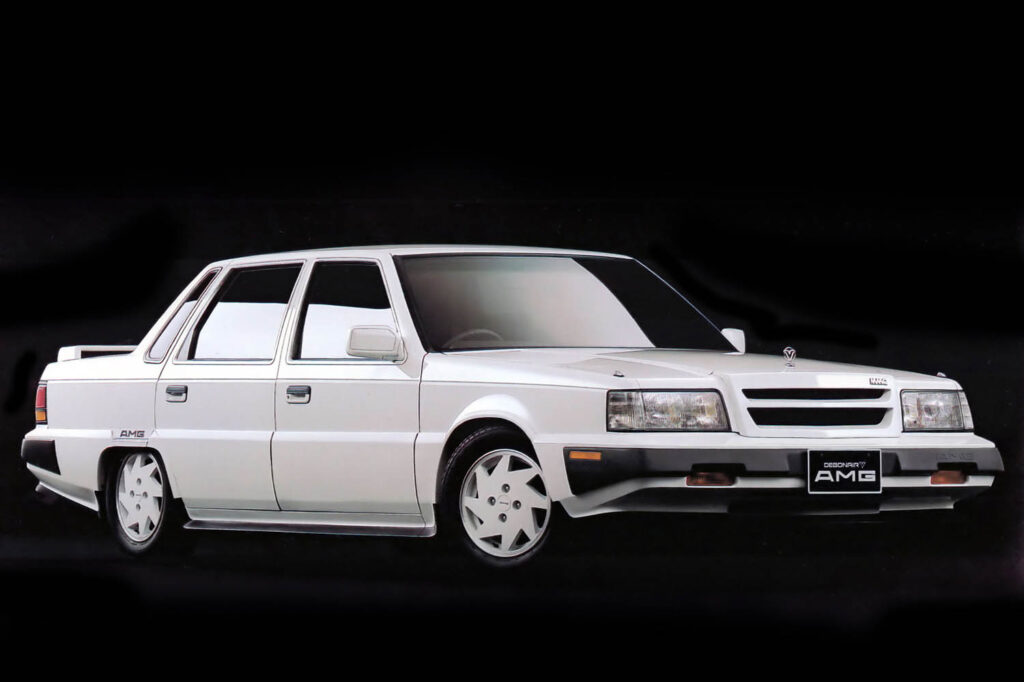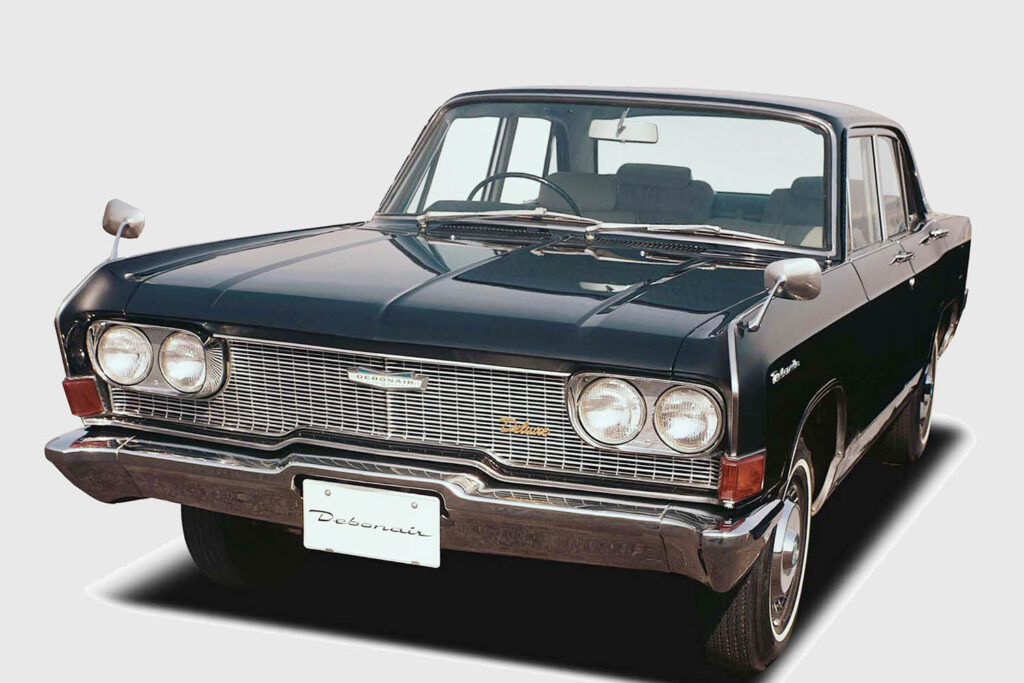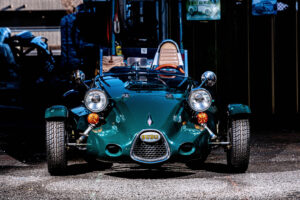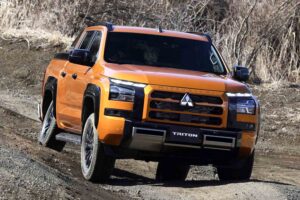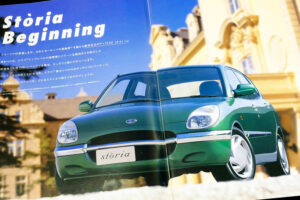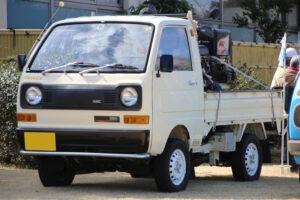The second generation was developed jointly with Hyundai and Chrysler
This Debonair was built almost without changing its style for 22 years, from its launch in 1964 until the second generation in 1986. I don’t know of any other car with such longevity, if I may be so forward as to say in the same style. Despite the high aspirations of the first generation, the second generation seems to have been a car that was at the mercy of current trends and the position of the manufacturer. First, the RWD was replaced by the FWD. This was because it was possible to increase interior space without incurring costs.
In the first place, this car was approached by Hyundai (then known as Hyundai, now Hyundai) of Korea for joint development, to which Mitsubishi agreed, and in a sense, it was a godsend for Mitsubishi. In addition, all Mitsubishi vehicles at the time were FWD, so the company had already accumulated the technology for FWD. So the platform itself was based on that of the Galant Sigma.
Mitsubishi’s first car with a V6 engine was also developed jointly with Chrysler, which also allowed them to split the development costs. Incidentally, the Grandeur, produced by Hyundai with badge engineering, was the best-selling car in its class in the Korean market at the time, but this was not the case for the Debonair in the Japanese market.
By the way, an AMG-tuned (but only basic appearance) model based on this car was also offered in this era, but it failed to find any sportiness in it.
The third generation introduced advanced equipment
The partnership with Hyundai continued with the third-generation Debonair, with Mitsubishi developing the powertrain system and Hyundai doing the body design. The system was introduced to measure the distance to the vehicle in front, in line with the current ACC system. However, the system only issued a warning when approaching, and at the time did not go as far as controlling vehicle speed.
Then in 1999, the Debonair came to an end, with the market being taken over by the more senior ‘Proudia’. If it had continued to be made, it would have celebrated its 60th anniversary this year.
translated by DeepL





